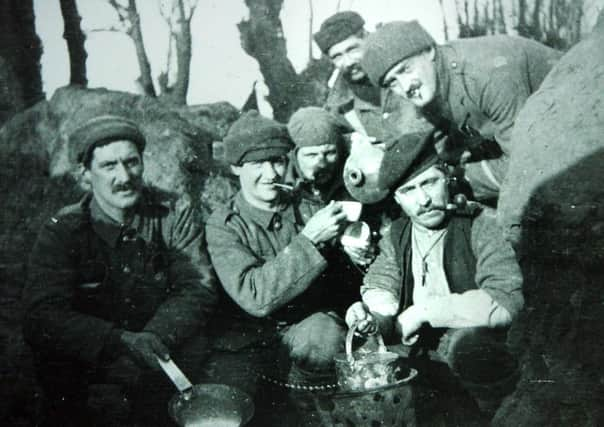Stephen Jardine: Army ration stew added to WWI suffering


Back home, munitions factories were in overdrive but it wasn’t just bombs and bullets the soldiers needed.
Napoloeon said “an army marches on it’s stomach” and although the two million British troops were going nowhere they had to be fed and that job fell largely to a firm in Aberdeen.
Advertisement
Hide AdAdvertisement
Hide AdArchibald and James Maconochie set up their meat-canning business in Suffolk but relocated to the north-east of Scotland to make the most of demand from the fishing industry. But their biggest business opportunity came with the start of the First World War.
The British Army stipulated soldiers should consume 4,000 calories a day. Initially the ration packs had grand aspirations including mustard and fresh vegetables but as the size of the army grew, rations were reduced to reflect the reality of war.
Instead the standard meal became Maconochie’s stew. When heated it was said to be tolerable but it was mostly served cold when the congealed fat made it barely edible. Using the original recipe, this week I made a small batch with meat, beans, potatoes and lard. Eaten cold, it was an ordeal more than anything else.
But for four long years, that was mealtime for many soldiers. They hated the monotony as much as the taste but stretched supply lines made it hard to offer much more.
Jam and condensed milk delivered some variety along with ration pack biscuits. Notoriously hard, soldiers used to soak them in tea or water to avoid cracking a tooth. Tea was one constant, offering a vital memory of home and a way to disguise the taste of water, often carried to the front line in petrol cans.
For anything more exciting, troops had to rely on parcels from home. It had to be food that would travel well so fruitcakes, chocolate and tinned pilchards were popular.
As the war progressed, life at home also grew more difficult. With men and horses sent to war, agricultural production fell and much of what was produced went to keep the army supplied.
Advertisement
Hide AdAdvertisement
Hide AdThe Germans introduced a submarine blockade to halt supplies and try to starve Britain into submission. By 1918 food was in short supply. Rationing was introduced for the first time and families had to register with butchers, bakers and grocers with sales of sugar, meat, flour, butter and milk all restricted.
There were long queues and what was available became more expensive but the public tolerated the shortages hoping a German defeat was now in sight. By November 1918 it was all over but it took several years for food production to get back to normal. Butter was rationed until 1920.
All of this seems a long time ago. The grinning photos of soldiers eating their Maconochie stew from billy cans in the mud and smiling civilians in the line for food give no sense of their hardship.
In tough times, we all turn to food for comfort but a century ago it simply wasn’t available.
Times are tough today, but the food of the First World War is a vivid reminder that compared to a previous generation, we are still the lucky ones.